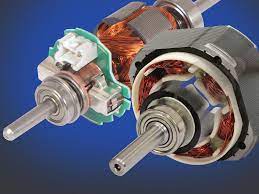


Choosing the right brushless motor for your drone or RC car involves understanding your vehicle’s requirements
Choosing the right brushless motor for your drone or RC car is crucial for performance and efficiency. Brushless motors deliver more power, last longer, and run more efficiently than brushed ones. This guide will help you understand the essentials—from motor basics to performance metrics—so you can make the best choice.
A brushless motor is a DC motor that uses electronic controllers to switch the power supply to its windings. Unlike brushed motors, it has no physical brushes, which means less friction, minimal maintenance, and a longer lifespan.
Higher efficiency
Greater power output
Less noise
Longer life span These qualities make brushless motors ideal for RC cars and drones.
Start by considering your vehicle’s size, weight, and intended use. Racing requires speed, while drones may need more torque for lift.
Choose a motor that balances performance and weight. An oversized motor can reduce maneuverability and battery life.
Check if the motor matches your vehicle’s mounting options, shaft size, and electrical specs.
Efficient motors consume less power, giving you longer run times and improved overall experience.
These motors spin the outer casing and offer high torque at lower speeds. Best for drones and planes.
These spin an inner rotor and are optimized for high speeds. They’re often used in RC cars and boats.
KV rating tells you how many RPMs the motor turns per volt. High KV = more speed, less torque. Low KV = more torque, less speed.
For drones, a lower KV motor gives better lift. For RC cars, a higher KV motor provides more speed.
Torque is the force that helps the motor rotate. It’s influenced by:
Current
Motor design
KV rating (lower KV = more torque)
Thrust is the force that moves your vehicle forward or upward. For drones, it’s what gets them off the ground.
Key factors include:
Propeller size and pitch
RPM
Air density
Without enough torque, a motor won’t spin the prop fast enough to create thrust. Both need to be balanced for top performance.
More torque means quicker starts and better hill climbing—essential for RC cars.
Thrust must exceed your drone’s weight for it to take off and maneuver well.
KV rating
Voltage range
Max current
Power output
Weight
Efficiency
Pay attention to:
Max current (match with your ESC)
Peak power
Propeller compatibility
Temperature limits
Align the motor with mount holes
Use proper screws and locknuts
Connect to ESC
Verify alignment and spin direction
Use thread-locking fluid
Balance propellers
Avoid overtightening screws
Check for dirt and debris
Inspect wires and connections
Use compressed air to clean
Lubricate bearings as needed
Overheating: Improve cooling or reduce load
Unusual noise: Check bearings and mounts
Low performance: Recheck settings and connections
T-Motor
EMAX
Hobbywing
Castle Creations
Racerstar
Choose based on durability, performance, and support.
Use thrust stands for drones
Measure RPM and acceleration for cars
Log data using ESC telemetry
KV rating measures RPM per volt. Higher KV = more speed, lower KV = more torque.
Match the motor to your drone or car’s weight and purpose. Use calculators or manufacturer guidelines.
Inspect every 10-20 hours. Clean debris and lube bearings regularly.
Not always. Check manufacturer specs. Use water-resistant models for wet conditions.
Choosing the right brushless motor means understanding your performance goals and matching motor specs to your vehicle’s needs. Whether you’re flying a drone or racing an RC car, the right motor boosts speed, power, and reliability.
